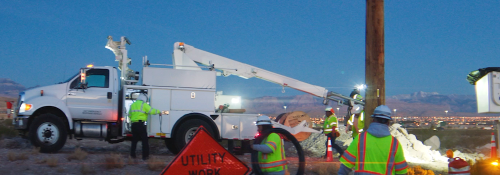2021 10G Progress Update
Over the past year, as the world was uprooted due to the COVID-19 pandemic and society was forced to transition to online platforms for everything from work to school to doctor’s appointments, there was a gained understanding among Americans about the importance of having fast, reliable broadband to ensure we all stay connected, no matter where we are. And as our dependence on broadband internet continues to grow, especially with the introduction of new immersive technologies for the home, school and workplace, we need to ensure our networks are powerful enough to keep up with our demands.
Two years ago, the broadband industry, led by NCTA – The Internet & Television Association, CableLabs, SCTE•ISBE and GIGAEurope, introduced its vision for the future of broadband, called 10G. Set to deliver speeds of 10 gigabits per second to homes in U.S. and around the globe with lower latency, higher reliability and improved security, the 10G Platform will enable the connected world of the future by powering next-generation technologies and applications including super high-definition streaming and gaming to holodecks and light field displays, 360° video and video walls and more.
Since our last progress update at the start of 2020, the industry has made incredible headway on the road to 10G, despite the challenges of this year, bringing us that much closer to making 10G a reality. Some of the most exciting milestones include:
- In March, CableLabs released the completed DOCSIS 4.0 specification, which supports up to 10 Gbps downstream and up to 6 Gbps upstream, allowing for widespread multigigabit symmetric services over HFC networks. Additionally, by leveraging both full duplex and extended spectrum capabilities, the technology gives operators the flexibility to decide how to increase network capacity to deliver on the promise of 10G.
- In September, Mediacom Communications hosted the first U.S. field trial of the 10G platform at its 10G Smart Home event in Ames, IA, bringing 10G from a laboratory concept to a real-world consumer experience. During the event, the operator demonstrated how the 10G platform will power the smart homes of the future by featuring more than 70 connected devices in one house.
- In October, Comcast achieved a technical milestone on the path to 10G in a trial delivering symmetrical 1.25 gigabit-per-second upload and download speeds over a live production network using Network Function Virtualization (NFV) combined with the latest DOCSIS Technology in Jacksonville, FL.
- Finally, CableLabs announced Intelligent Wireless Network Steering (IWiNS), a technology built to enable adaptive traffic steering and seamlessly transition among different wireless networks (LTE, Wi-Fi, CBRS, etc.). IWiNs is set to deliver delivers a more reliable and real-time optimized user experience, a key step towards the seamless connectivity 10G is expected to provide.
Also in October, Telecom Advisory Services released a 10G economic impact report, which demonstrated that new the broadband platform will generate at least $330 billion in total economic output and create more than 676,000 new jobs over seven years. According to the study’s analysis, by bringing about both technological and economic growth, 10G will usher in the “fourth industrial revolution,” accelerating the emergence of smart homes, smart cities and smart industries, including in agriculture and manufacturing.
Having fast, high-bandwidth broadband is more necessary than ever, and that need will only grow in the future. As we look to 2021, we are excited to see the new progress operators are able to make as they continue to work toward bringing the 10G future to life.

